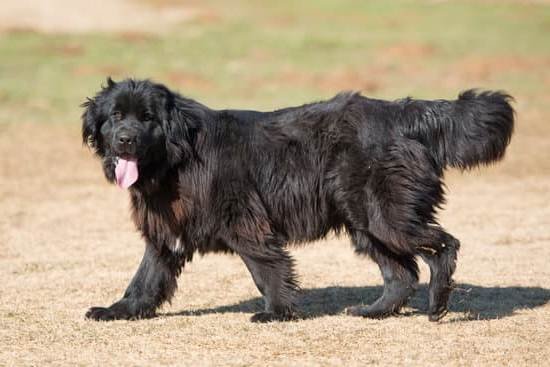Are you or a loved one living with diabetes? Have you ever wondered how to train a diabetes alert dog to help manage the condition? Look no further. This article will guide you through the process of training a diabetes alert dog, from understanding their role to overcoming common challenges in the training process.
Diabetes alert dogs play a crucial role in the lives of individuals with diabetes, as they are trained to detect and alert their owners to dangerous blood sugar levels. In this section, we will explore the important roles that these specially trained dogs play in managing diabetes and providing peace of mind for their owners.
When it comes to training a diabetes alert dog, not all dogs possess the qualities necessary for this important task. We will discuss the key qualities that make a good diabetes alert dog candidate, so that you can identify the right potential companion for yourself or your loved one. With this foundational knowledge, we can then delve into the initial steps of training these remarkable animals.
The Qualities of a Good Diabetes Alert Dog Candidate
Good Temperament
A key quality to look for in a diabetes alert dog candidate is a good temperament. The ideal candidate should exhibit calm, gentle, and friendly behavior, as they will need to interact with their handler and other individuals on a regular basis. Additionally, they should be able to remain focused and attentive during training sessions and while performing their alerting duties.
High Energy Level
Another important quality in a diabetes alert dog candidate is a high energy level. Since the role may require them to stay active and alert for long periods, candidates with sufficient energy levels are better suited for the task. Dogs that enjoy physical activity and have stamina are more likely to excel as diabetes alert dogs.
Sensitivity to Scent
Sensitivity to scent is a critical quality in potential diabetes alert dog candidates. They must exhibit a strong sense of smell and be able to detect changes in their handler’s blood sugar levels through scent cues. This sensitivity is vital for accurately alerting their handler of impending highs or lows.
When selecting a candidate for training as a diabetes alert dog, these qualities should be taken into consideration to increase the likelihood of success in their role. By identifying dogs with these specific traits, the training process can be more effective and lead to an impactful partnership between the dog and their diabetic handler.
Initial Steps in Training a Diabetes Alert Dog
Training a diabetes alert dog is a crucial and life-changing process for both the dog and their human companion. The initial steps in training set the foundation for a successful partnership, and it’s important to approach this stage with patience, consistency, and positive reinforcement. Here are the key initial steps in training a diabetes alert dog:
1. Establishing Trust: Building a strong bond of trust between the dog and their handler is essential. This involves spending quality time together, engaging in positive interactions, and ensuring that the dog feels secure in their environment.
2. Basic Obedience Training: Before diving into scent training and alerting behavior, it’s important to ensure that the dog has a solid grasp of basic obedience commands such as sit, stay, come, and heel. This lays the groundwork for effective communication during more advanced training.
3. Familiarizing with Scent: Introducing the dog to the scent of hypoglycemia or hyperglycemia is an important initial step. This can be done by allowing the dog to sniff an item with the scent while providing treats or positive reinforcement.
Once these initial steps are established, you can then move on to more specialized training techniques for diabetes alert dogs such as scent training and alerting behavior training.
By laying a strong foundation through these initial steps, you set your diabetes alert dog up for success in their vital role of detecting changes in blood sugar levels and helping their human companion manage their condition effectively. With dedication and proper guidance, you can make a significant impact in how to train diabetes alert dogs.
Scent Training for Diabetes Alert Dogs
Scent training is a crucial aspect of training a diabetes alert dog. These specially trained canines are able to detect the subtle changes in their owner’s scent when their blood sugar levels are too high or too low.
The first step in this process is to introduce the dog to the specific scent that is associated with the owner’s fluctuating blood sugar levels. This can be done by using a sample of the person’s saliva or breath that reflects their blood sugar level at different times.
Once the dog has been introduced to the target scent, they must then be trained to recognize and differentiate it from other scents. This can be achieved through repetitive exposure to the scent and positive reinforcement when they correctly identify it. Over time, the dog will learn to associate this particular smell with the owner’s need for assistance.
A key component of scent training for diabetes alert dogs is ensuring that they are able to distinguish between normal fluctuations in blood sugar levels and those that require intervention. This requires careful and consistent training, as well as ongoing practice and reinforcement. The successful completion of scent training is essential for a diabetes alert dog to effectively fulfill its lifesaving role.
| Key Aspect of Scent Training | Details |
|---|---|
| Introducing the Target Scent | Use of owner’s saliva or breath reflecting blood sugar levels |
| Differentiating and Recognizing Scent | Repetitive exposure and positive reinforcement |
| Distinguishing Normal Fluctuations vs. Emergency Levels |
Alerting Behavior Training for Diabetes Alert Dogs
Training a diabetes alert dog to exhibit proper alerting behavior is a crucial aspect of their training process. This behavior involves the dog signaling their handler when they detect a change in blood sugar levels, allowing the individual to take necessary action to manage their condition. Here are some essential steps and tips for effectively training a diabetes alert dog to exhibit alerting behavior:
1. Establish a consistent alert signal: The first step in training alerting behavior is to establish a clear and consistent signal that the dog will use to indicate changes in blood sugar levels. This could be a nudge, pawing, or even barking, whichever is most comfortable for both the dog and the handler.
2. Pair the alert signal with scent detection: It’s important to associate the alert signal with the specific scent that the dog has been trained to detect. This reinforces the connection between the scent and the need for the alerting behavior.
3. Use positive reinforcement: During training sessions, it’s essential to use positive reinforcement techniques such as treats, praise, and playtime to encourage and reward the dog for displaying the correct alerting behavior.
4. Gradually introduce real-life scenarios: As training progresses, it’s important to expose the dog to real-life situations where they can practice exhibiting their alerting behavior in response to actual changes in blood sugar levels.
Training a diabetes alert dog requires time, patience, and consistency. By following these steps and utilizing positive reinforcement techniques, handlers can effectively teach their dogs how to properly exhibit lifesaving alerting behaviors.
By investing time and effort into training a diabetes alert dog to display effective alerting behaviors, handlers can significantly improve their quality of life and have peace of mind knowing that they have a reliable companion looking out for their well-being at all times.
Advanced Training for Diabetes Alert Dogs
After your diabetes alert dog has mastered the initial steps of training and scent detection, it’s time to move on to more advanced training. This includes refining their skills in recognizing and alerting to changes in blood sugar levels, as well as optimizing their behavior in different scenarios.
One important aspect of advanced training is teaching your diabetes alert dog to differentiate between normal scents and the specific scent associated with your fluctuating blood sugar levels. This can be achieved through continued practice with varying concentrations of the scent and providing positive reinforcement when they correctly identify it.
Another key component of advanced training is simulating real-life situations in which their alerting behavior will be crucial. This may involve introducing distractions, changing environments, or implementing scenarios that mimic the circumstances in which you typically experience fluctuations in blood sugar levels.
Finally, ongoing maintenance and refreshing of their training is essential to ensure that your diabetes alert dog remains sharp and reliable. Regular practice sessions, exposure to different environments, and consistent reinforcement of their alerting behavior are all vital in keeping them at the top of their game.
| Training Aspect | Description |
|---|---|
| Scent Training | Continued practice with varying concentrations of the scent to solidify recognition. |
| Real-Life Simulation | Introducing distractions and changing environments to optimize alerting behavior. |
| Maintenance and Refreshing | Regular practice sessions and consistent reinforcement to maintain reliability. |
Maintaining and Refreshing Training for Diabetes Alert Dogs
Maintaining and refreshing the training of a diabetes alert dog is crucial to ensure that they can continue to effectively perform their life-saving role. Just like any other skill, the ability of a diabetes alert dog to detect changes in their owner’s blood sugar levels can diminish over time if not consistently reinforced.
This section will provide guidance on how to maintain and refresh the training of diabetes alert dogs, ensuring that they remain reliable and effective in assisting their owners.
Consistent Practice and Reinforcement
Consistency is key in maintaining the training of a diabetes alert dog. Regular practice sessions should be incorporated into the dog’s daily routine to reinforce their scent detection and alerting behaviors.
This can be achieved through simulated scenarios where the dog is presented with various scents associated with high or low blood sugar levels, prompting them to perform their alerting behavior. Additionally, positive reinforcement in the form of treats or praise should be consistently used to reward the dog for correctly identifying these scents and responding accordingly.
Regular Refresher Training
In addition to consistent practice, regular refresher training sessions should also be scheduled to keep the diabetes alert dog sharp and responsive. These sessions provide an opportunity to revisit foundational scent training exercises, as well as review and reinforce more advanced skills such as response to specific alerts. By incorporating refresher training into their routine, handlers can proactively address any signs of diminishing performance before they become problematic.
Monitoring Changes in Performance
It is important for handlers to closely monitor the performance of their diabetes alert dogs over time. Any noticeable decline in accuracy or responsiveness during training exercises should be promptly addressed through additional reinforcement and potential adjustments to the training approach.
Regular monitoring allows handlers to identify any potential challenges or obstacles that may arise in maintaining the dog’s training, enabling them to take proactive measures to address them before they impact the dog’s effectiveness in real-life situations.
By maintaining a consistent training regimen, regularly refreshing skills, and closely monitoring performance, handlers can ensure that their diabetes alert dogs remain reliable and effective partners in managing this chronic condition. The commitment to ongoing training and maintenance is essential for maximizing the lifesaving impact of these remarkable service animals.
The Importance of Consistency in Training a Diabetes Alert Dog
Consistency is key when it comes to training a diabetes alert dog. These dogs play a crucial role in the lives of individuals with diabetes, as they are trained to detect changes in blood sugar levels and alert their owners or caregivers. In order for a diabetes alert dog to effectively perform its job, consistency in training is essential.
To begin with, it is important for the trainer to establish clear and consistent routines during the initial steps of training a diabetes alert dog. This includes feeding times, exercise schedules, and regular check-ins on the dog’s behavior and progress. By maintaining a consistent routine, the dog can develop a sense of predictability and structure, which is essential for its training.
Scent training is a crucial aspect of training a diabetes alert dog, and consistency is vital in this process. The dog must be consistently exposed to the scent associated with changes in blood sugar levels so that it can learn to recognize and differentiate it from other scents.
Additionally, alerting behavior training also requires consistency, as the dog needs to understand that it will be rewarded for correctly detecting and signaling changes in blood sugar levels. Overall, maintaining consistency throughout all stages of training is essential for ensuring that the diabetes alert dog becomes proficient in its life-saving duties.
Common Challenges in Training Diabetes Alert Dogs and How to Overcome Them
Training a diabetes alert dog can be a rewarding yet challenging experience. While these dogs have the potential to save lives, there are common challenges that trainers may encounter during the training process. It is important to be aware of these challenges and have strategies in place to overcome them in order to successfully train a diabetes alert dog.
One common challenge in training diabetes alert dogs is maintaining consistency in the training process. Dogs thrive on routine and repetition, so it is crucial to consistently reinforce the desired behaviors through ongoing training sessions.
Inconsistency can lead to confusion for the dog and hinder their ability to effectively perform their alerting duties. To overcome this challenge, trainers should establish a regular training schedule and stick to it, using positive reinforcement techniques to encourage and reward the dog for correct alerting behavior.
Another challenge that trainers may face is ensuring that the diabetes alert dog remains focused on its task, especially in distracting environments. This requires teaching the dog to ignore extraneous stimuli and remain attentive to detecting changes in their handler’s scent. To combat this challenge, gradual acclimation to various environments should be incorporated into the training regimen, allowing the dog to become accustomed to different surroundings while staying focused on their specific alerting task.
Additionally, some diabetes alert dogs may struggle with health issues or fatigue, which can impact their ability to consistently perform their alerting duties. Trainers must prioritize the well-being of the dog by monitoring their physical condition and providing adequate rest periods during training sessions. A healthy and energetic dog will be more capable of effectively detecting changes in their handler’s scent and providing timely alerts as needed.
Overcoming these common challenges in training a diabetes alert dog requires patience, dedication, and a deep understanding of canine behavior. By addressing consistency, focus in distracting environments, and maintaining the health of the dog, trainers can enhance the effectiveness of their diabetes alert dog’s training and ultimately save lives through early detection of hypoglycemic or hyperglycemic episodes.
The Lifesaving Impact of a Well-Trained Diabetes Alert Dog
In conclusion, the impact of a well-trained diabetes alert dog on the life of someone with diabetes cannot be overstated. These specially trained dogs have the ability to detect changes in blood sugar levels and alert their owners, potentially saving them from dangerous highs or lows. With their keen sense of smell and impeccable training, these dogs provide invaluable support and peace of mind to individuals living with diabetes.
Successfully training a diabetes alert dog requires careful selection of a candidate with the right qualities and dedication to initial and advanced training. Scent training and alerting behavior training are crucial components in preparing these dogs for their lifesaving role. It is essential to maintain consistency in training and be prepared to overcome challenges that may arise during the process.
Ultimately, the bond between a person with diabetes and their alert dog is one of trust and reliance. The partnership between them can truly be life-changing, giving the person with diabetes more freedom and confidence in managing their condition.
By understanding the significance of a well-trained diabetes alert dog, individuals can explore this unique form of support in managing their health. If you are considering getting an alert dog or interested in training one yourself, understanding the process outlined in this article will guide you on how to train a diabetes alert dog effectively.
Frequently Asked Questions
Can I Train My Own Diabetic Alert Dog?
Training your own Diabetic Alert Dog can be challenging but it is possible with the right resources and commitment. It’s important to seek guidance from professionals and follow a structured training program to ensure the dog is properly trained for this important role.
Can Untrained Dogs Detect Diabetes?
Untrained dogs have been known to detect changes in their owner’s blood sugar levels, but they lack the specific training to consistently and reliably alert their owner to these changes. While some untrained dogs may exhibit natural alerting behaviors, it’s not guaranteed or consistent.
Is a Diabetic Alert Dog Worth It?
Whether a Diabetic Alert Dog is worth it depends on the individual’s needs and lifestyle. These specially trained dogs can provide peace of mind, independence, and potentially life-saving alerts for people with diabetes. However, they require ongoing care, training maintenance, and financial investment, so it’s important to carefully consider if the benefits outweigh the responsibilities.

Welcome to the blog! I am a professional dog trainer and have been working with dogs for many years. In this blog, I will be discussing various topics related to dog training, including tips, tricks, and advice. I hope you find this information helpful and informative. Thanks for reading!





